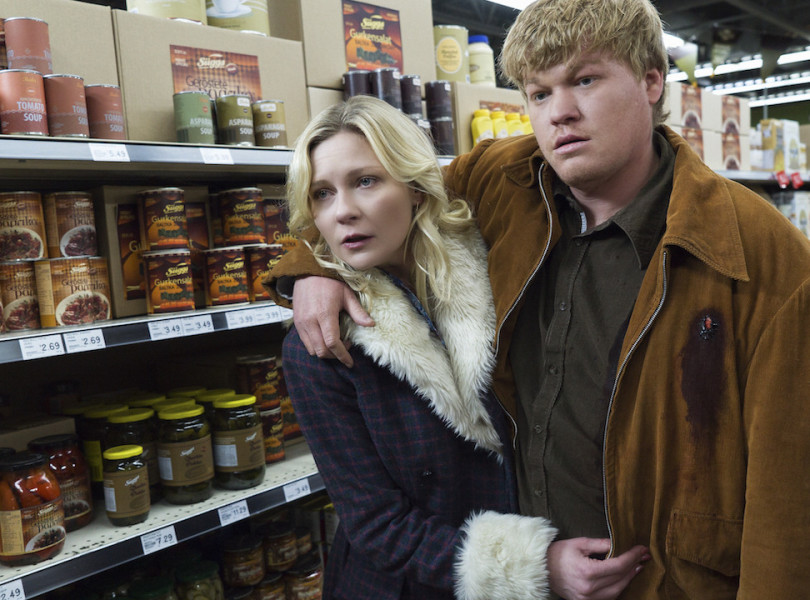You betcha, Fargo is just about as good as it gets.
Fargo was challenged to do the near-impossible in Season 2: first, it needed to continue to validate Noah Hawley’s decision to adapt the Coen brothers’ film Fargo, and second, it needed to deliver a season that would at least match if not surpass the near-perfect Fargo: Season 1. On both counts it succeeded with flying colors, delivering a well-conceived, well-acted, well-written and well-executed sophomore season that improved upon everything that worked in Season 1.
Full spoilers for Fargo: Season 2 continue below.

After coming off a season that introduced a character as iconic as Billy Bob Thornton’s Lorne Malvo, Hawley made the correct choice to not try to recreate a villain as singular as that one. Instead, Season 2 introduced a wide ensemble of characters, all of whom were important (including some like Hanzee whose relevance didn’t become clear until the very end). Hinged around a familiar character with a difference face in Patrick Wilson’s Lou Solverson, Season 2 brought us the ill-fated Gerhardts, the Blumquists and their terrible timing, and the wonderful madness of Mike Milligan and the Kitchen Brothers.
It’s no surprise that Fargo would bring together an impressive ensemble of actors after its excellent first season. Wilson was a clear standout, as was Bokeem Woodbine as Mike Milligan, Kirsten Dunst as Peggy Blumquist, Jean Smart as Floyd Gerhardt and Jesse Plemons as Ed Blumquist. But even the less-central actors who didn’t get as much screentime — like Cristin Milioti’s Betsy Solverson, Angus Sampson’s Bear Gerhardt and Nick Offerman’s Karl Weathers — all stood out in the time they had, proving that the team behind Fargo has a great eye for casting actors who will lean into their roles and not waste screentime.

I’ve said before that Fargo feels like a masterclass in storytelling, and that proves true by the end of Season 2. The use of score, editing, cinematography — every component that allows a medium of entertainment to own its tone comes across here, and that’s a key part of what makes Fargo so clear in its execution of its intent. Even story gambles like the inclusion of an actual UFO into the plot worked simply because Fargo had so well established the madness of this world where something like an extra-terrestrial occurrence wasn’t even the most insane thing to happen on that day.
Story-wise Season 2 offered a new spin on what worked in Season 1; there are still unwitting people who get drawn into a war between villainous groups that quickly spirals out of control, but from the beginning Season 2 introduces many of its major players versus slowly weaving together a wide group of key characters. Instead of exploring parables, this year we examined Albert Camus’ claim in the “Myth of Sisyphus” that life is absurd because we know we must die. It’s this repeated theme that gets discussed over and over, spinning out into other philosophical ideas but ultimately coming back to the imagery of a person pushing a boulder up a hill every day, only to have it roll back to the bottom and the cycle being repeated again.
Fargo wasn’t perfect this year, but it got pretty close. Sometimes it became a bit too artistic to the extent that it detracted from the overall story, but more often than not the risks the season took worked. Each episode felt like its own small feature woven into the 10-hour movie that Hawley was creating. For the most part they stood on their own, and were framed with narrative devices like Martin Freeman’s narration of “The History of True Crime in the Mid West” in “The Castle.” Others, like the standout “The Gift of the Magi” and “Rhinoceros,” used multiple installments to execute arguably the best episodes of the season.
We want to hear it.
When Fargo comes back with its already-renewed Season 3, it’s not going to be revisiting the events that unfolded in Fargo, Luverne and Sioux Falls in 1979. The Gerhardts and the Solversons and the Blumquists will be left in the past, and there probably won’t be any UFOs showing up. Season 3 will take place several years after the events of Season 1, won’t feature any of Season 1’s main characters and will focus on some of the ways modernity play into our day-to-day life. But despite those big changes, Fargo has established our trust so that no matter which chapter of “The History of True Crime in the Mid West” falls open, we have faith that the quality and care for the content will be on par with the stories we love that the series has told before.
Fargo: Season 2 was about as well-executed, well-acted and well-conceived a season of television as we’ve seen. The FX drama stayed at the top of its game in its sophomore season, experimenting with different concepts as its traveled back in time and delivering great surprises and iconic new characters in the process.



